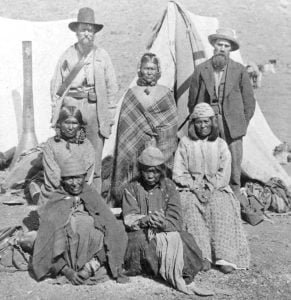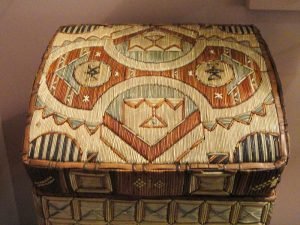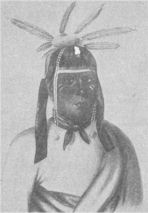Mohave Tribe
Mohave Indians (from hamok ‘three’, avi ‘mountain’). The most populous and war like of the Yuman tribes. Since known to history they appear to have lived on both sides of the Rio Colorado, though chiefly on the east side, between the Needles (whence their name is derived) and the entrance to Black Canyon. Ives, in 1857, found only a few scattered families in Cottonwood Valley, the bulk of their number being below Hardyville. In recent times a body of Chemehuevi have held the river between them and their kinsmen the Yuma. The Mohave are strong, athletic, and well developed, their … Read more





